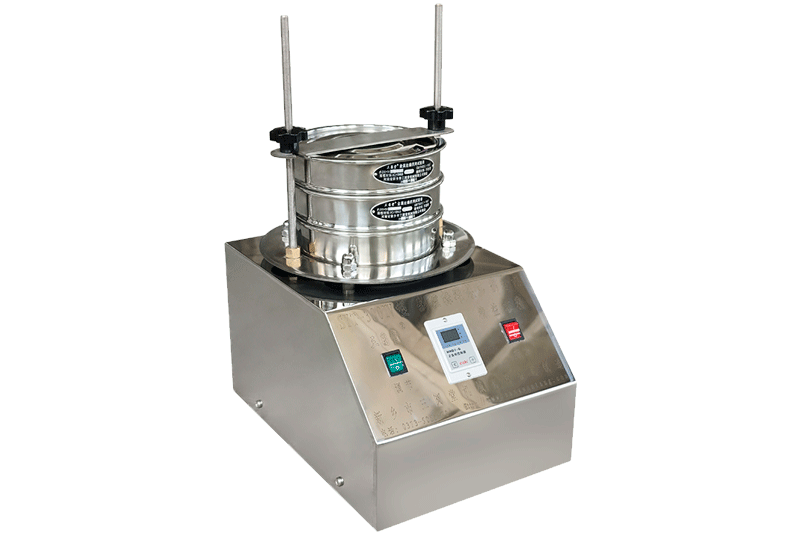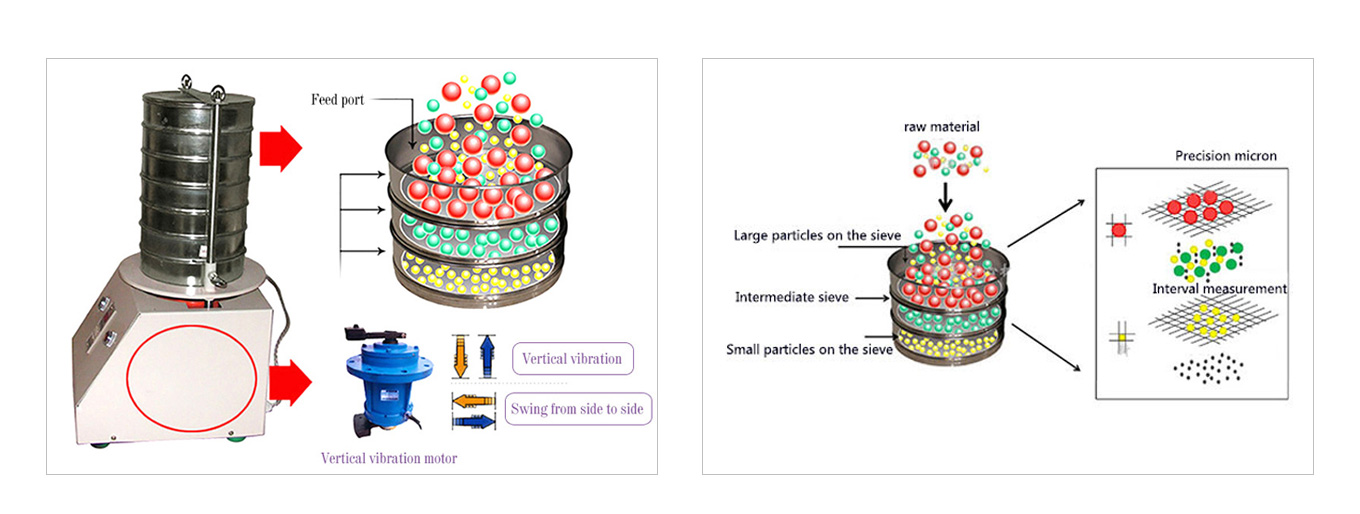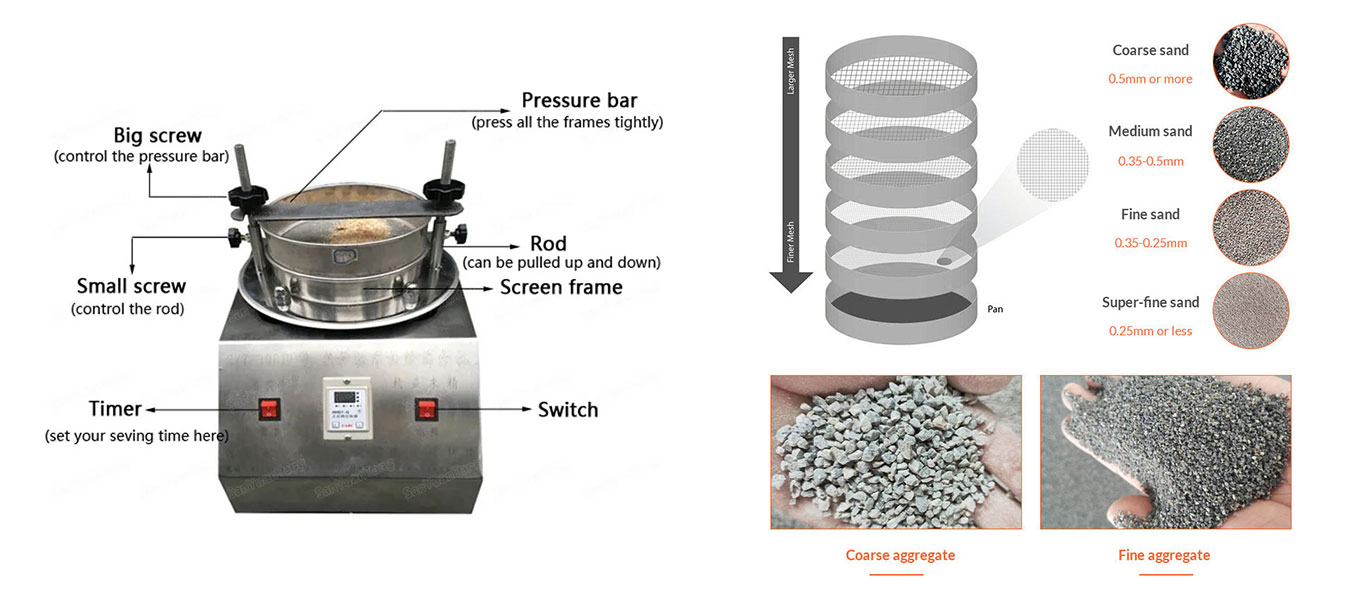
The test sieve shaker is a specialized laboratory tool designed for the precise analysis of particle and powder materials, as well as the assessment of solid content and impurities in liquids. Its adjustable sieving time minimizes inspection errors, ensuring accurate product quality analysis. This highly efficient device can handle a wide range of materials and is capable of separating up to 8 groups of samples simultaneously. Equipped with an electronic timer, it ensures consistent analysis times for the same material, thereby reducing errors and enhancing the accuracy of product quality assessments.
Compact and Portable
Small size and light weight make it easy to move.
High Precision Screening
Capable of screening up to 600 mesh with an ultrasonic system.
Versatile Use
Ideal for laboratories and quality inspection departments.
Wide Application
Suitable for screening solids, powders, and liquids.
Optimal Feeding Capacity
Handles up to 200g of material in a single feed.
Quiet Operation
Low noise levels ensure a comfortable working environment.
Efficient and Accurate
High efficiency and precision in screening.
Timed and Bidirectional Screening
Features fixed time settings and forward/reverse rotation for comprehensive material screening, ensuring test repeatability and full functionality.
The test sieve shaker utilizes a new vibration motor as its excitation source, converting the motor's rotational motion into horizontal, vertical, and inclined three-dimensional motion. This vibration is transmitted to the standard analysis sieve and the material on the sieve surface, enabling precise particle size classification.The working principle of the test sieve is based on the principle of vibration screening. The test sieve is usually composed of a screen frame, a screen, a vibration mechanism and a supporting structure. When the test sieve is started, the vibration force generated by the vibration mechanism is transmitted to the screen frame, causing the screen frame and the screen to vibrate. After the particles are put into the screen frame, they are affected by the vibration force and jump on the screen. Small particles fall into the container below through the screen holes, while large particles remain on the surface of the screen. Through screens of different specifications, particles of different particle sizes can be separated and classified. Particles are separated during vibration, and the screening effect is affected by parameters such as amplitude and frequency. After screening, particle size analysis can be performed based on particle distribution to provide data support for production process optimization and product quality control.

The test sieve machine usually consists of the following main components
1. Screen: The part used to screen particles, with a mesh size of 300.
2. Screen bottom: The part that supports the screen, usually made of metal or plastic.
3. Vibrator: Provides vibration force to force particles through the screen.
4. Screen box: The part that holds the screen and particles, usually with a transparent or openable design for easy operation.
5. Motor: Drives the vibrator for vibration operation. These components work together to achieve screening and grading of granular materials.

| Model | Layers | Diameter | Granularity | Amplitude | Voltage | Power | Dimension | Weight |
| SY-200 | 7 | 200/300mm | 0.038-5mm | 5mm | 220V | 0.18kw | 360*300*736mm | 25kg |
The standard test sieve shaker is extensively utilized in scientific research, production, laboratories, and quality inspection rooms across various industries. It accurately screens, filters, and detects the particle size structure, liquid solid content, and impurity content of granular and powdery materials.
Building materials industry: cement, crushed stone, granite, quartz sand, silica sand, concrete
1. Food industry: flour, meat meal, candy, starch, sugar, juice, xylitol, ganoderma powder, malt powder, coffee powder, condiments, food additives, pollen, vegetable powder, egg powder, milk powder, soda powder, flavors, etc.
2. Pharmaceutical industry: Western medicine powder, Chinese medicine powder, pharmaceutical intermediates, pearl powder, etc.
3. Non-metallic industry: carbon black (white carbon black), quartz powder (sand), mica, fluorescent powder, feldspar powder, kaolin, fly ash, glass beads, etc.
4. Chemical industry: soda ash, polyethylene, resin powder (PVC, epoxy), washing powder, additives, paint, dyes, pigments, rubber, coatings, perlite, silica powder, activated carbon, polyethylene powder, fire extinguishing agent, pigments, etc.
Other industries: environmental protection, plastics, magnetic materials, mining, kiln industry, feed, etc.
Thirty years of dedication have allowed us to accumulate extensive production and service experience, enabling us to solve various challenges in powder processing for our numerous clients.
Innovation is the lifeblood of our company's development. To date, we have obtained over 40 domestic and international patents, with many of our products holding multiple patents.
We specialize in undertaking the design and production of fine powder processing production lines, offering a one-stop service from crushing, screening, conveying, feeding, mixing to packaging.
Upon receipt of the products, detailed English user manuals are provided. For relatively complex installations or product usage, video installation guidance is available. For large-scale technical projects, we can dispatch professional technical personnel for on-site installation guidance.
 Please fill in the informationWe provide you with personalized solutions
Please fill in the informationWe provide you with personalized solutionsIf you do not know how to select, please call us or leave a message online. We will serve you wholeheartedly!